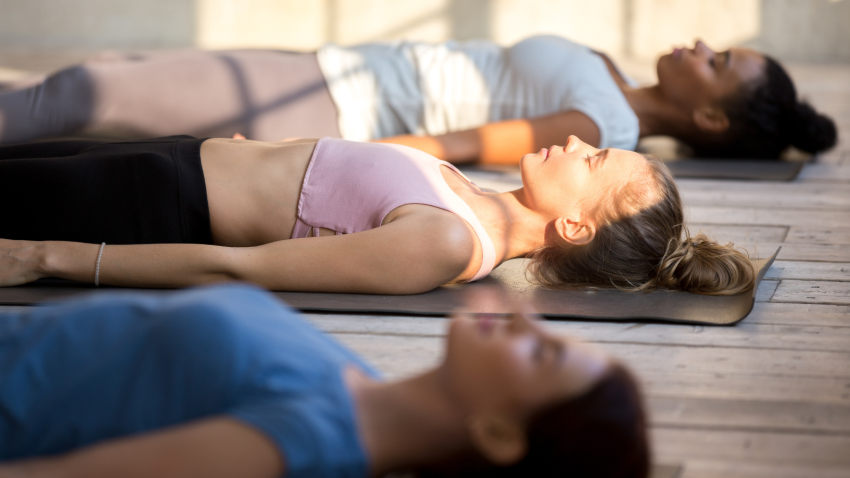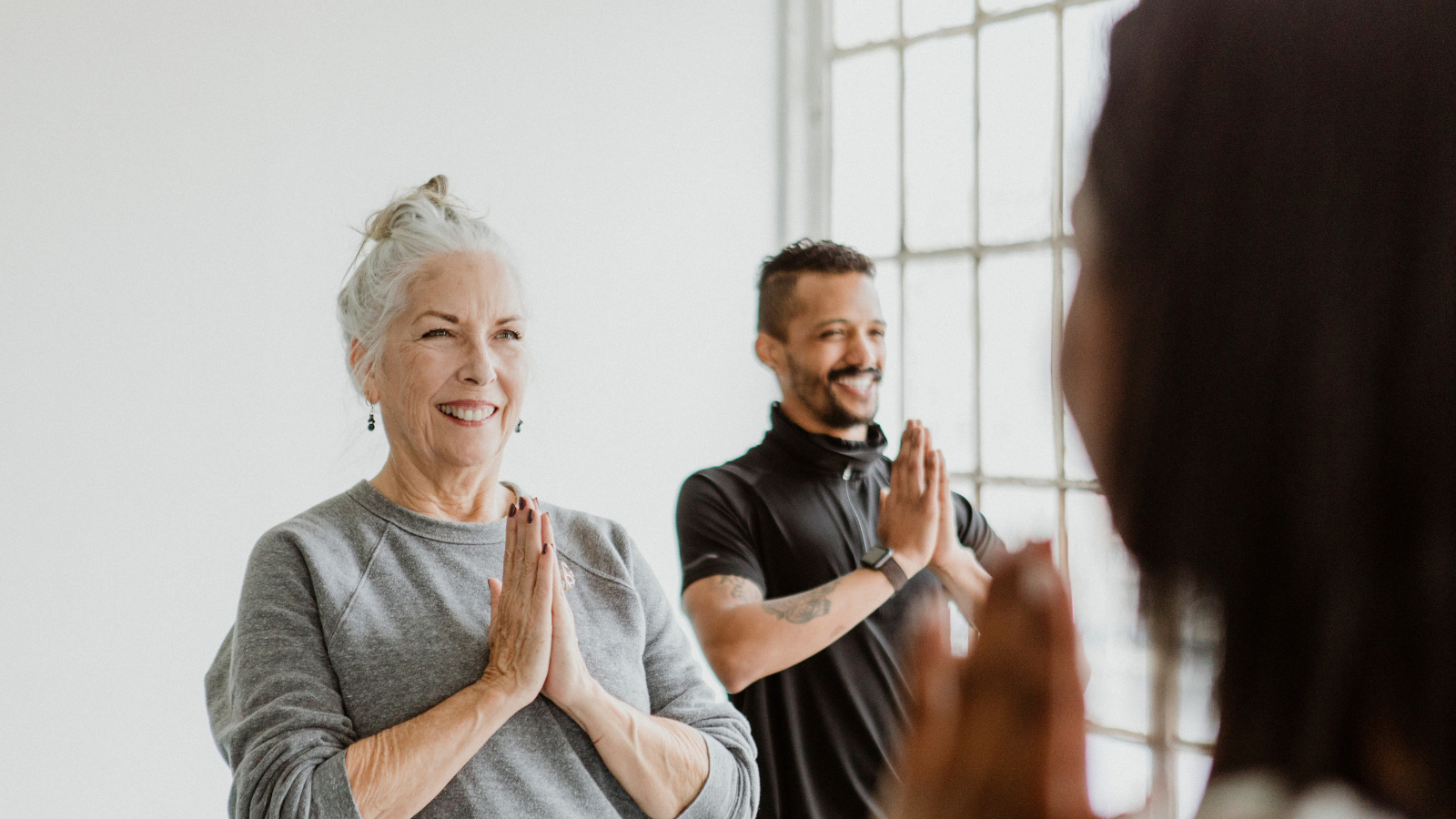View basket (0 items $0.00)

How to Allow Change in Your Life
Have you had the experience of trying really hard to make something happen, over and over, and it just won’t happen? Then you finally stop trying to force it, and that’s when it happens. People often use the example of romantic relationships: stop looking, and then you’ll find the right person. But we can create the opportunity for this in any area of our life by learning how to allow change instead of forcing it.
Yes, there are some situations where we need to take action and make things happen no matter how hard it feels. But there are other situations in which it’s more effective to create the right environment and then allow change to happen. It’s up to you to figure out which is which in your life.
In my experience, retraining your nervous system and getting out of pain is one of the latter situations in which allowing change to happen is more effective than trying to force it to happen. If you’re trying to get out of pain or make changes in your muscle tension, posture, and movement, and you feel like you’re not making progress or you keep running into roadblocks, it’s a sign that you might be trying to force change. You’re likely focused on your end goal rather than on the exploratory process of discovering how you’re using your body.
Forcing change to happen feels difficult, tense, and stressful. It’s goal-oriented and future-focused. In contrast, allowing change to happen feels relaxing and enjoyable. You’re in the present moment and not worried about the future or a particular outcome. When you’re in the practice of allowing, change happens easily and seemingly without effort.
4 Ways to Create an Environment to Allow Change
We need to develop and maintain awareness, be willing to make changes in our daily habits and activities if they’re preventing us from making progress, and commit to a daily exploratory practice of somatic exercises.
Here are some active steps you can take toward creating the environment for change to happen:
1. Evaluate your regular physical activities (exercise, housework, etc.) and become aware of what might be keeping you stuck in tension or pain.
2. Notice how you use your body throughout your daily life, even when you’re doing mundane things like working at a computer, using your phone, doing the dishes, watching TV, and lying in bed.
3. Be willing to make changes in your activities and habits if it seems necessary. This might include taking a break from a certain type of exercise, trying a new type of exercise, making your workstation more ergonomic, changing your sleeping position, or buying new shoes or a new pillow. This might also include asking for help if there are certain activities that you simply can’t do for a while.
4. Commit to a daily practice of Clinical Somatics exercises. It may vary in length and how many exercises you do, but simply make the commitment to use the exercises to explore your body each day. As you become more comfortable with the exercises, it will become easier to feel your way through your practice instead of going into it with a set plan.
Forcing vs. Allowing in Somatic Exercises
What Forcing Feels Like
“I need to release my back muscles! I’m going to do the Back Lift (instructions below) three times.” You lie down on the floor and get into your starting position. You lift up, contracting your back muscles and forcing yourself to go as high as you can. Then you lower down, telling yourself to release slowly but looking forward to getting to the floor at the same time. Some of your mental focus is on getting to the floor and being done with the movement.
When you reach the floor, you pause for a moment, but you don’t completely release all of your muscle tension and let yourself melt into the floor. You move quickly into the second repetition and then the third, eager to move on to the next exercise—maybe that one will do it!—or be done with your practice for the day.
What Allowing Feels Like
You notice that your back feels tight. “I want to work with my back muscles right now. I think I’ll start with the Back Lift.” You lie down on the floor and get into your starting position. You take a few moments to settle in, noticing how your body feels and letting your muscles completely relax. You let all other thoughts leave your mind and completely focus on your internal sensations.
When you feel ready, you gently inhale into your belly and start lifting up your head, hand, arm, and leg. You notice your back, shoulder, and gluteal muscles gently contracting. You notice how it feels as you lift up a little higher. You sense when you’ve lifted up as high as you want to right now and pause for a moment to notice what that place feels like. Then you gently start releasing, resisting gravity. Your intention is not focused on getting down to the floor. All of your mental energy is focused—in a relaxed way—on staying in this slow, gentle release for as long as possible. You enjoy what feels like a never-ending movement. If it feels unpleasant, painful, or like a struggle, that’s a sign that you probably lifted up too high or that your muscles are fatigued.
When you do finally reach the floor, you release all of your muscle tension and relax for several moments. You tune into how your body feels. Do you want to do that movement again? If so, you do, but you don’t repeat it exactly the same way. You approach it as if it’s the first time you’ve done it. And if you feel ready to move on, then you sense what else your body needs and move into that next exercise.
When you feel like you’ve practiced as much as you want to, you slowly and gently get up to standing. You stand still, close your eyes and completely relax, and take as long as you need to sense what changes you feel throughout your body. When you’re ready, you open your eyes and gently start moving, staying aware of the changes you’ve made in your nervous system and allowing them to be carried into your regular daily life.
How to Practice Back Lift Pose
-
Lie on your stomach with your head turned to the right. Stretch your left arm down by your side. Have your right arm bent, elbow pointing straight out to the side, and your right palm resting on the floor near your head.
-
Slowly lift your right elbow off the floor, leaving your palm on the floor. Notice the gentle contraction in your upper trapezius muscle (between your shoulder and neck). Only lift up as high as is comfortable for you. When you're ready, lower your elbow down as slowly as you can, using all your mental focus.
-
Inhale down into your lower belly, and at the same time, gently lift your head off the floor, keeping it turned to the right. Only lift as high as is comfortable. Feel the gentle contraction of your lower back muscles. When you're ready, lower down and release your lower back as slowly and with as much control as you can.
-
Slide your right hand under your left cheek or temple so that your left cheek or temple is resting on the back of your right hand. Inhale down into your lower belly, and at the same time, lift up your head, hand, and right arm all at the same time. Feel the contraction of muscles from your right shoulder down to your lower back. When you're ready, lower down and release these muscles as slowly and with as much control as you can.
-
Slide your right hand out from under your head if you wish. Slowly lift up your left leg, leaving your knee straight. Feel the contraction of your gluteal and lower back muscles. When you're ready, lower down and release these muscles as slowly and with as much control as you can.
How to Practice Clinical Somatics Exercises to Allow Change
When you first start learning Clinical Somatics exercises, it will probably not be possible for you to just “feel your way” through your practice. You’ll only know a few exercises, and you won’t know them well enough to practice without the audio or video guiding you. That’s fine! Just take it one day at a time, and don’t be focused on your end goal, whatever that end goal is.
In the beginning, focus on learning and exploring each new exercise as it comes up in your course. Focus on making time for your somatics practice each day, and don’t go into it with a set plan (“I need to do these specific exercises five times each!”). Take it one exercise at a time, relax and explore it fully, and notice how your body feels afterward. Move on to the next exercise when you feel ready. Only do as much each day as you have time and attention for.
It may be hard to believe, but when you step back, create the environment for change, and relax and allow change to happen, it often happens more easily, quickly, and with better results than if you had tried to force it!
Reprinted with permission from Somatic Movement Center.
 Sarah Warren St. Pierre is a Certified Clinical Somatic Educator and the author of the book Why We’re In Pain. She was trained and certified at Somatic Systems Institute in Northampton, MA. Sarah has helped people with chronic muscle and joint pain, sciatica, scoliosis, and other musculoskeletal conditions become pain-free by practicing Thomas Hanna’s groundbreaking method of Clinical Somatic Education. Sarah is passionate about empowering people to relieve their pain, improve their posture and movement, and prevent recurring injuries and physical degeneration.
Sarah Warren St. Pierre is a Certified Clinical Somatic Educator and the author of the book Why We’re In Pain. She was trained and certified at Somatic Systems Institute in Northampton, MA. Sarah has helped people with chronic muscle and joint pain, sciatica, scoliosis, and other musculoskeletal conditions become pain-free by practicing Thomas Hanna’s groundbreaking method of Clinical Somatic Education. Sarah is passionate about empowering people to relieve their pain, improve their posture and movement, and prevent recurring injuries and physical degeneration.
Featured Courses









